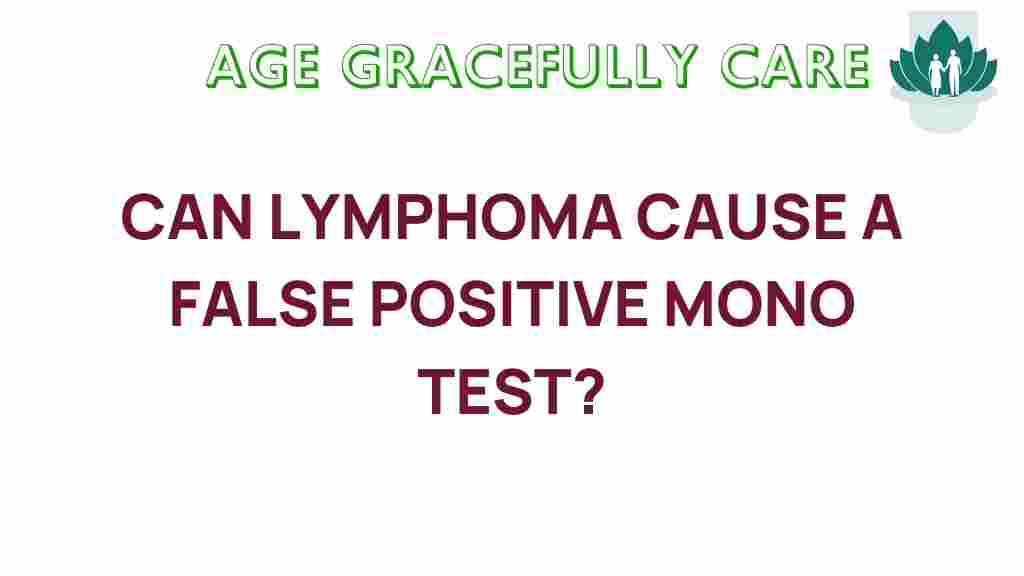Can Lymphoma Mimic Mono? Unraveling the Diagnostic Mystery
Lymphoma and infectious mononucleosis (commonly referred to as mono) share several symptoms that can lead to confusion during the diagnostic process. Both conditions can present with fatigue, swollen lymph nodes, and fever, making it challenging for healthcare professionals to distinguish between them without thorough testing. This article will explore the similarities and differences between lymphoma and mono, focusing on the importance of accurate diagnosis, the role of blood tests, and patient awareness of these medical conditions.
Understanding Lymphoma
Lymphoma is a type of cancer that originates in the lymphatic system, which is part of the body’s immune system. There are two main types of lymphoma: Hodgkin lymphoma and non-Hodgkin lymphoma. Both types can cause similar symptoms, but their treatment and prognosis vary significantly.
Understanding Mono
Mono is primarily caused by the Epstein-Barr virus (EBV) and is often characterized by symptoms such as:
- Severe fatigue
- Fever
- Sore throat
- Swollen lymph nodes
- Headaches
While mono is typically a self-limiting illness, the overlap in symptoms with lymphoma can lead to misdiagnosis, particularly in younger patients who may be at higher risk for both conditions.
Symptoms Overlap
Both lymphoma and mono share common symptoms, including:
- Extreme fatigue
- Fever
- Swelling of lymph nodes
- Night sweats
- Unexplained weight loss
This symptom overlap emphasizes the need for comprehensive diagnostic testing to differentiate between these two conditions effectively.
The Role of the Mono Test in Diagnosis
The mono test, or heterophile antibody test, is often the first step in diagnosing infectious mononucleosis. However, it is important to note that this test can sometimes yield false positives. This means that a patient may test positive for mono even if they have another condition, such as lymphoma.
Why False Positives Occur
False positives can occur for several reasons:
- Cross-reactivity: The antibodies tested for in the mono test may react with other antibodies present in the blood, leading to a positive result.
- Recent infections: Other viral infections can trigger similar antibody responses that confuse the test results.
- Underlying health conditions: Certain medical conditions can also interfere with the accuracy of the mono test.
Due to these factors, a positive mono test does not always mean that a patient has mono, especially if they exhibit symptoms that suggest lymphoma.
Further Diagnostic Steps
When a patient presents with symptoms that suggest either lymphoma or mono, healthcare providers typically follow a series of diagnostic steps:
- Clinical Evaluation: The doctor conducts a thorough medical history and physical examination, focusing on symptoms, risk factors, and family history.
- Blood Tests: In addition to the mono test, a complete blood count (CBC) and specific lymphoma markers can be ordered to assess overall health and check for abnormal cell counts.
- Imaging Studies: If lymphoma is suspected, imaging studies such as CT scans or PET scans may be performed to visualize lymph nodes and other organs.
- Biopsy: A definitive diagnosis of lymphoma typically requires a biopsy of affected lymph nodes or tissues to examine for cancerous cells.
These steps are crucial in ensuring that patients receive an accurate diagnosis and appropriate treatment.
Patient Awareness and Advocacy
It is essential for patients to be aware of the symptoms of both lymphoma and mono. Being informed can empower patients to seek timely medical advice and advocate for thorough testing. Here are some tips for patients:
- Track Symptoms: Keep a record of symptoms experienced, including duration and severity, to discuss with a healthcare provider.
- Ask Questions: If diagnosed with mono, inquire about the possibility of other conditions, like lymphoma, especially if symptoms persist or worsen.
- Get a Second Opinion: If there is uncertainty about a diagnosis, consider seeking a second opinion from another healthcare professional.
Being proactive about health can lead to timely interventions and better health outcomes.
Troubleshooting Diagnostic Confusion
In cases where lymphoma mimics mono, the following troubleshooting tips can be beneficial:
1. Comprehensive Blood Work
Request comprehensive blood tests, including:
- Complete Blood Count (CBC): This test can reveal anemia, high white blood cell counts, or other abnormalities that may indicate lymphoma.
- Lymphocyte Subset Analysis: This test can help identify abnormal lymphocyte populations that may suggest lymphoma.
2. Monitor Symptoms Over Time
Symptoms of lymphoma may evolve over time. Keeping a detailed log can help both the patient and healthcare provider assess any changes that may warrant further investigation.
3. Follow Up on Test Results
Patients should follow up on all test results, asking for clarity on any abnormalities or inconclusive findings. This dialogue is crucial for determining the next steps in diagnosis.
4. Consider Genetic Testing
In certain cases, genetic testing may provide additional insights into the nature of the condition, particularly if there is a family history of lymphoma or other hematological malignancies.
Conclusion
In summary, while lymphoma can mimic mono, the key to an accurate diagnosis lies in comprehensive testing and patient awareness. Understanding the similarities and differences between these two medical conditions is essential for both patients and healthcare providers. By recognizing the potential for false positives in mono testing, patients can be proactive in seeking further evaluation and advocating for their health.
For more information on lymphoma and related medical conditions, consider visiting this resource or consult with a healthcare professional.
Being informed and engaged in your health can lead to better outcomes and ensure that any serious conditions are diagnosed and treated promptly.
This article is in the category Health and created by AgeGracefullyCare Team
